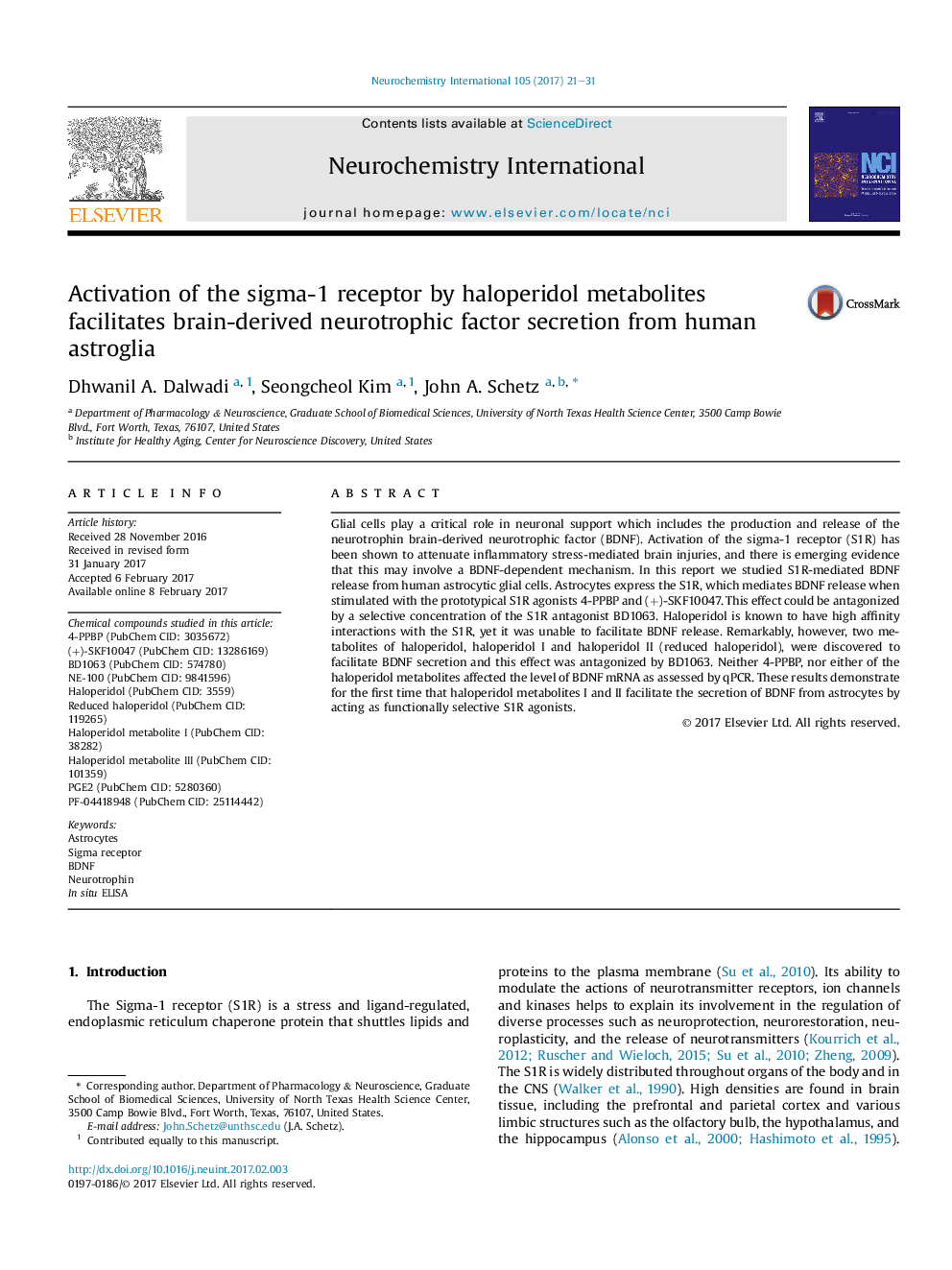| کد مقاله | کد نشریه | سال انتشار | مقاله انگلیسی | نسخه تمام متن |
|---|---|---|---|---|
| 5534610 | 1551270 | 2017 | 11 صفحه PDF | دانلود رایگان |
- Human-derived astroglia express a stress and ligand-regulated chaperone protein.
- Functionally selective ligands of this protein facilitate the release of BDNF.
- Haloperidol metabolites act as functionally selective ligands of this protein.
- These same metabolites do not increase mRNA levels of BDNF.
Glial cells play a critical role in neuronal support which includes the production and release of the neurotrophin brain-derived neurotrophic factor (BDNF). Activation of the sigma-1 receptor (S1R) has been shown to attenuate inflammatory stress-mediated brain injuries, and there is emerging evidence that this may involve a BDNF-dependent mechanism. In this report we studied S1R-mediated BDNF release from human astrocytic glial cells. Astrocytes express the S1R, which mediates BDNF release when stimulated with the prototypical S1R agonists 4-PPBP and (+)-SKF10047. This effect could be antagonized by a selective concentration of the S1R antagonist BD1063. Haloperidol is known to have high affinity interactions with the S1R, yet it was unable to facilitate BDNF release. Remarkably, however, two metabolites of haloperidol, haloperidol I and haloperidol II (reduced haloperidol), were discovered to facilitate BDNF secretion and this effect was antagonized by BD1063. Neither 4-PPBP, nor either of the haloperidol metabolites affected the level of BDNF mRNA as assessed by qPCR. These results demonstrate for the first time that haloperidol metabolites I and II facilitate the secretion of BDNF from astrocytes by acting as functionally selective S1R agonists.
Journal: Neurochemistry International - Volume 105, May 2017, Pages 21-31
